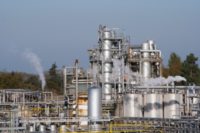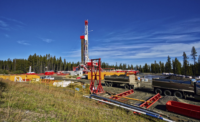All over America and across greater Houston, capital of the nation's petrochemical industry, hundreds of chemicals pose serious threats to public safety at facilities that may be unknown to most neighbors and are largely unpoliced by government at all levels, a yearlong Houston Chronicle (http://bit.ly/1VSg45P) investigation reveals.
OSHA doesn't inspect most facilities; when it does, it's often due to an accident or complaint. The EPA ignores entire classes of hazardous chemicals when looking at which sites to scrutinize. Texas and other states have made accessing information about chemical stockpiles more difficult. Local emergency planning groups are in many cases unfunded, and, in the most extreme instances, include people on staff lists who have died.
The danger is real. Since November 2014, when four employees died after a gas leak at a DuPont plant in La Porte, there have been 12 explosions, fires and toxic releases widely reported around greater Houston, including one recently that destroyed a Spring Branch packing facility that handles hazardous materials.
That's one every six weeks.
Nationally, at least 17 people have died and 573 have been hospitalized in more than 93 incidents involving hazardous chemicals in the last year and a half.
In response to the DuPont accident, the Chronicle obtained the chemical inventories of more than 2,500 businesses in greater Houston. Chemical safety experts at Texas A&M University's Mary Kay O'Connor Process Safety Center then ranked the potential of each facility to kill or injure people and cause property or environmental damage should an incident occur. The analysis was based on the properties and quantities of the chemicals and the size of the surrounding population.
The results — adjusted for OSHA violations and company responses — found 55 facilities with the highest potential for harm to the public. Close to 600 scored in the medium tier, storing chemicals dangerous enough to impose serious harm in an accident. Nearly 80 percent of the facilities in those tiers have 10,000 or more people within a 2-mile radius.
Sam Mannan, who heads the O'Connor center and is one of the nation's pre-eminent experts on chemical safety, watches the same root causes play out again and again in accidents — lack of assessed risks, communities kept in the dark, inattention to zoning. "We are literally running from disaster to disaster without a well-thought-out plan," he said.
It's only a matter of time, Mannan said, before an accident reaches beyond a plant's fenceline to claim lives.
Source: Houston Chronicle, http://www.houstonchronicle.com



